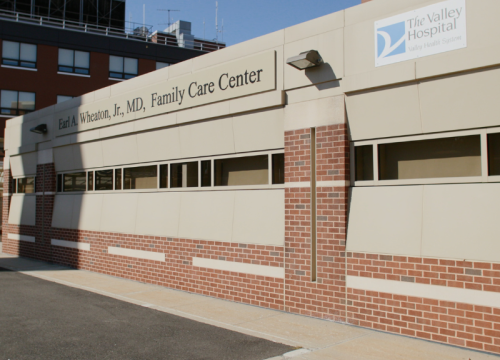Cardioversion is a nonsurgical procedure that resets your heart rhythm back to normal if you have an arrhythmia (irregular heartbeat). This treatment can help ease symptoms of atrial fibrillation (AFib) and other arrhythmias, like chest pain and shortness of breath.
Valley offers two effective approaches to cardioversion:
- Electrical cardioversion: This same-day procedure uses electricity to restore your normal heart rhythm.
- Chemical cardioversion: In this treatment, you receive medicine to correct your irregular heartbeat.
Our electrophysiologists have extensive experience with cardioversion. They’ll work with you to determine if it’s right for you. Because cardioversion is not a cure for arrhythmias, we may recommend it along with other advanced treatments available at Valley.
Am I a Candidate for Cardioversion?
You may be a candidate for cardioversion if you have certain types of arrhythmia, including:
- Atrial fibrillation (AFib)
- Atrial flutter
- Atrial tachycardia
- Supraventricular tachycardia
Cardioversion is not right for everyone with an arrhythmia. You may not be a candidate if you only have mild symptoms or if you have other health risks. Our expert electrophysiology team will evaluate your risks and recommend the best options for you.
Benefits of Cardioversion
Cardioversion can help prevent problems caused by some arrhythmias, including:
- Shortness of breath
- Chest pain
- Fatigue
- Rapid heartbeat
- Higher risk of stroke or heart attack
Cardioversion may also be used as an emergency treatment for ventricular tachycardia, an irregular heart rhythm that can be life-threatening.
What Happens During Cardioversion?
Before having electrical or chemical cardioversion, your doctor will have you start taking a blood thinner for at least four weeks. This reduces your risk for blood clots, which can cause complications during the procedure.
If you’re not able to take blood thinners, a cardiologist on our team may perform another procedure called a trans-esophageal echocardiogram (TEE). A TEE uses high-frequency sound waves to check for blood clots inside your heart.
Electrical Cardioversion
To prepare for your electrical cardioversion:
- Don’t apply lotions, powders or creams to your chest and back for 24 hours before the procedure. This can interfere with the paddles used to deliver electricity to your heart.
- Avoid eating or drinking for at least eight hours before treatment.
- Leave your jewelry at home.
- Take your usual medicines on the morning of your procedure unless your doctor gives you other instructions. Bring a list of all your medications, including over-the-counter medicines and supplements.
- Have someone available to drive you home after the procedure; you will not be able to drive yourself home.
What to Expect During Electrical Cardioversion
Here’s what you can expect during an electrical cardioversion:
- When you arrive to the hospital, a nurse will place an IV (intravenous line) in your arm.
- An anesthesiologist will give you medicine to put you asleep. You will only be asleep for a few minutes.
- If you need a trans-esophageal echocardiogram (TEE), you will have this before your electrical cardioversion.
- When you are asleep, we will place two paddles on your chest. These paddles will deliver an electrical shock that lasts for less than a second. You may need more than one shock to get your heart rhythm back to normal. You will not feel pain or remember the shock when you wake up.
- The procedure takes less than 15 minutes.
Recovery from Electrical Cardioversion
After the cardioversion, our team will watch you closely for about an hour. You may feel sleepy, but your loved ones can see you.
Here’s what you can expect during your recovery:
- Most people who have cardioversion at Valley can go home in two to three hours.
- You will need someone to drive you home because of the anesthesia.
- You should avoid using machinery or making important decisions for the rest of the day.
- You can return to your usual activities the next day.
- The skin on your chest may be sore for a few days from the paddles. Our team will suggest creams or medicines to help.
Electrical cardioversion is effective for about 90% of our patients. However, the effects may not be long-lasting for some people. You can have cardioversion many times because it does not affect your heart function.
If electrical cardioversion does not work for you, our team will suggest other treatments to help restore your heart rhythm. This may include medicine to maintain a regular heart rhythm or an ablation.
Chemical Cardioversion (with Medication)
To prepare for your chemical cardioversion:
- Avoid eating or drinking for at least eight hours before treatment.
- Take your usual medicines on the morning of your procedure unless your doctor gives you other instructions. Bring a list of all your medications, including over-the-counter medicines and supplements.
- Have someone drive you to the hospital because you will not be able to drive yourself home.
What to Expect During Chemical Cardioversion
Here’s what you can expect during a chemical cardioversion:
- Your doctor may ask you to come to the hospital or doctor’s office, where you will receive medicine through an IV or to swallow. You will not be put to sleep.
- In some cases, your doctor may give you medicine to take at home to restore your heart rhythm.
- It may take only minutes or hours for the medicine to work. Occasionally, it may take a few days.
- If chemical cardioversion doesn’t work, our team may recommend an electrical cardioversion or another treatment.
Follow-up After Cardioversion
After an electrical or chemical cardioversion, your doctor will discuss your results with you. Your doctor may also suggest other treatments, such as medicine or an ablation, to help you maintain your heart rhythm. That’s because cardioversion is not a cure for arrhythmias.
It is important that you take your blood thinner for at least one month after your procedure. Depending on your condition, you may need to take this medicine for a longer period.
Why Choose Valley for Cardioversion?
- Expertise in atrial fibrillation: Valley’s Snyder Center for Comprehensive Atrial Fibrillation offers the most innovative ways to treat and manage AFib and other arrhythmias. Our team includes national leaders in electrophysiology who publish studies in leading medical journals each year. They also lead clinical trials for AFib and other heart rhythm conditions.
- Patient-centered team: Our electrophysiologists work alongside other specialists in cardiology, imaging, sleep medicine, weight-loss management, stress management and nutrition. Together, we combine our expertise to tailor a care plan based on your needs and preferences. Our aim is to help you manage your condition, prevent stroke and improve your overall health.
















